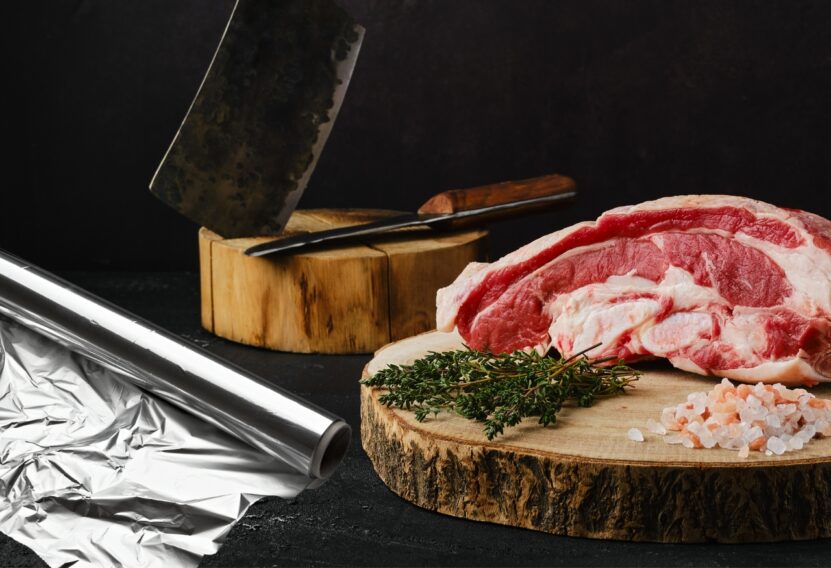The tantalizing aroma, the smoky flavors, and the tender, melt-in-your-mouth texture of the brisket—there’s nothing like it. Whether you’re a backyard griller or an aspiring pitmaster, you’re well aware that cooking brisket is both an art and a science.
But one question divides the barbecue world into two camps: should you wrap your brisket before or after the infamous temperature stall?
Before we dive into the juicy details, let’s get one thing straight: wrapping or not wrapping your brisket isn’t a mere cosmetic choice. It’s a decision that can make or break the outcome of hours of meticulous work and patience. So buckle up, brisket lovers, as we embark on a smoky, savory journey to discover what’s best for your next culinary masterpiece.
What Is the Stall, and Why Does It Happen?
The temperature stall is a phenomenon where the internal temperature of the meat seemingly plateaus, often around 150-160°F, despite a consistent cooking environment. It can last for hours, leaving many a pitmaster scratching their heads in confusion and frustration.
The leading scientific explanation for this plateau is evaporative cooling. As the meat cooks, moisture from its interior makes its way to the surface and evaporates. This evaporation has a cooling effect, counteracting the heat from the smoker or grill. It’s akin to how sweating cools down the human body.
Should You Even Care About the Stall?
You might wonder, “Why don’t I just crank up the heat and power through the stall?” Well, patience is key. The stall is a crucial time for collagen—a tough protein in the meat—to break down into gelatin. This process is vital for achieving that much sought-after tenderness.
Moreover, the slower cooking time allows for better flavor penetration and development. If you rush through the stall, you risk ending up with a brisket that’s tough and lacking in flavor.
The Dilemma: To Wrap or Not to Wrap
When you reach the stall, you’re faced with a decision: to wrap your brisket to hasten the cooking process or to let it ride out the stall unwrapped. Both approaches have their merits and pitfalls, which we’ll dive into next.
The Case for Wrapping Before Stall
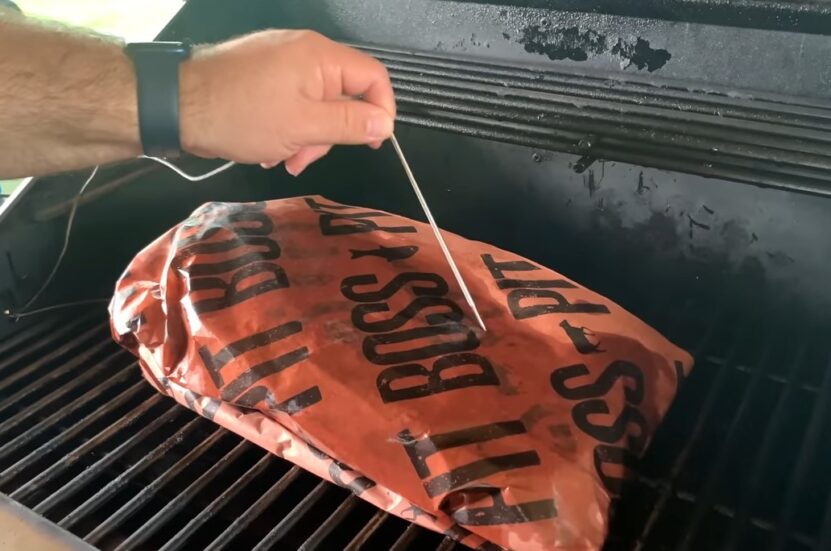
The Benefits
Wrapping the brisket before it hits the stall can offer several advantages:
- Moisture Retention: The wrap helps to lock in juices, yielding a moist end product.
- Time-Saving: It can shave off hours from your cooking time, ideal if you’re on a tight schedule.
- Flavor Concentration: The wrap can help intensify flavors by keeping all the meat juices and seasonings confined.
The Downsides
Of course, there are also some drawbacks:
- Soft Bark: The moist environment inside the wrap can soften the bark, which is the crispy exterior many people love.
- Less Smoky Flavor: Wrapping early may limit the amount of time the meat is exposed to smoke, which could result in a less smoky flavor.
Best Practices
If you decide to wrap before the stall, aim to do it when the internal temperature of the brisket reaches around 140-145°F. Use high-quality aluminum foil or butcher paper, and make sure to seal the wrap tightly to lock in those valuable juices.
The Case for Wrapping After Stall
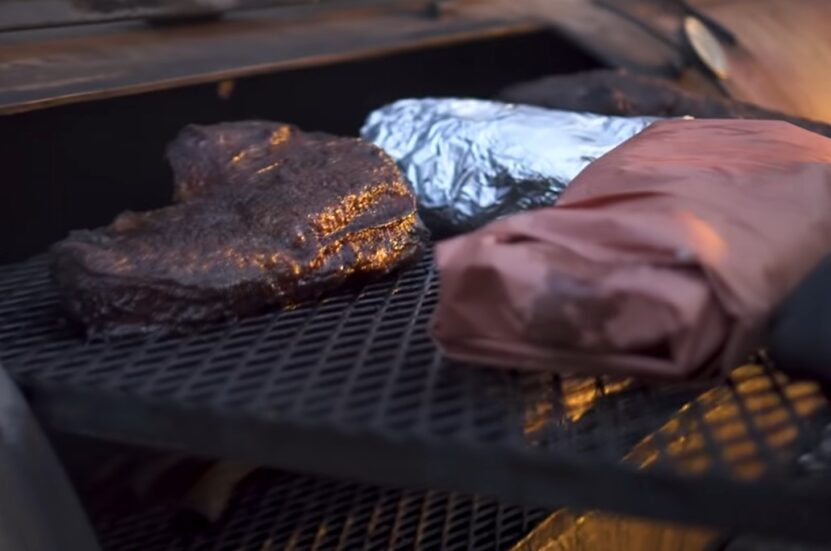
The Benefits
Here’s why you might want to consider wrapping your brisket after it has gone through the stall:
- Crispier Bark: The bark has time to develop a robust, crispy exterior before it’s wrapped.
- More Smoky Flavor: The meat has a longer exposure to the smoke, allowing for a more nuanced flavor profile.
The Downsides
However, this method is not without its disadvantages:
- Risk of Drying Out: Prolonged exposure to heat without a protective wrap could lead to a drier brisket.
- Longer Cooking Time: You’ll need to invest more time, sometimes several more hours, to cook the brisket to perfection.
Best Practices
If you opt for this route, you should wrap the meat when you notice the internal temperature starting to rise again after the stall, usually around 165-170°F. Again, quality wrapping materials are key.
Unwrapped: The Rebel Route
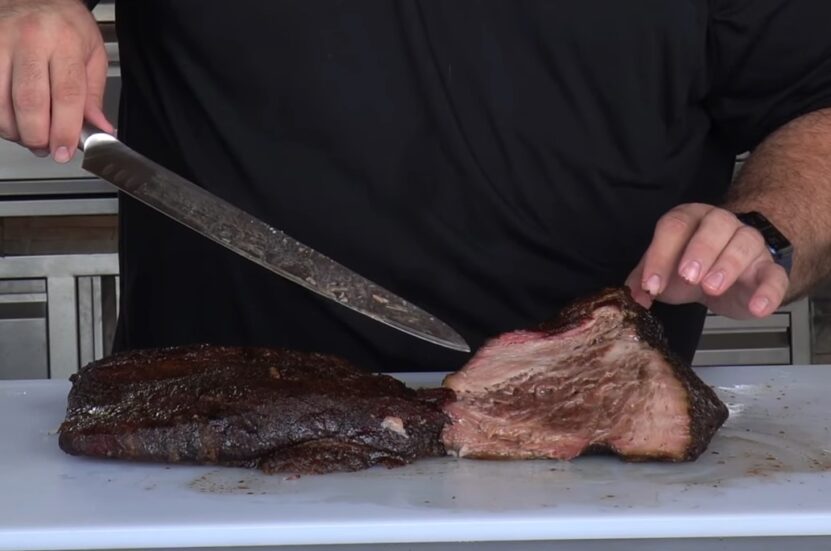
Why Some Pitmasters Prefer Going Naked
For the purists out there, the idea of wrapping a brisket might seem like heresy. They argue that an unwrapped brisket:
- Develops the crispiest bark.
- Achieves the most authentic, intense smoky flavor.
- Allows for a traditional, “old-school” barbecue experience.
The Reality Check
Let’s balance the scales by acknowledging the risks:
- Most Time-Consuming: Expect to add several more hours to your cooking time.
- Potential Dryness: Without any protective layer, the risk of drying out your brisket increases, especially for less experienced cooks.
Best Practices
If you’re daring enough to go this route, you should at least consider using a water pan in your smoker to help with moisture retention. Make sure to monitor the meat’s internal temperature carefully to avoid overcooking.
The Influence of Different Wrapping Materials
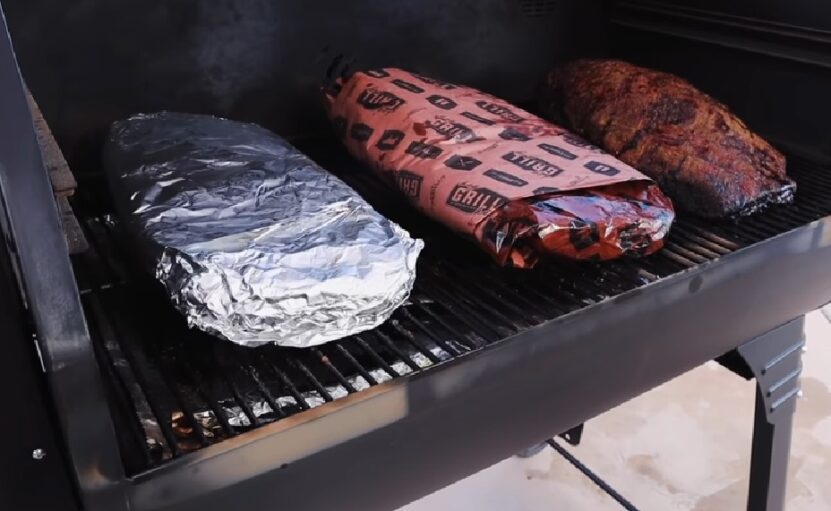
Aluminum Foil vs. Butcher Paper vs. Parchment Paper
Each wrapping material has its own set of pros and cons:
- Aluminum Foil: Best for moisture retention but may soften the bark too much.
- Butcher Paper: A balanced choice that allows some breathability, preserving the bark’s texture while still retaining moisture.
- Parchment Paper: Somewhere in between, but not as commonly used for brisket.
Making the Right Choice
Here are some pointers to consider when choosing a wrapping material:
- Type of Smoker: Some smokers may produce more or less moisture, influencing your choice.
- Personal Preference: Ultimately, your taste preference for bark texture and moisture level will dictate the best material for you.
Expert Tip
For a more scientific approach, try a split test. Cut your brisket in half and wrap one half in foil and the other in butcher paper. Compare the results to determine your personal preference.
FAQs
What is the “stall” in brisket cooking?
The “stall” refers to a period during the cooking process when the internal temperature of the brisket plateaus, usually around 165 degrees Fahrenheit. This happens due to the evaporation of moisture from the surface of the meat, which cools it down and halts the cooking process. The stall can last for several hours.
What is the purpose of wrapping a brisket?
Wrapping a brisket serves multiple purposes:
- It speeds up the cooking time.
- It gives you control over the appearance of the bark.
- It locks in moisture, resulting in juicier meat.
When is the best time to wrap a brisket?
Most pitmasters recommend wrapping the brisket when its internal temperature reaches between 165-170 degrees Fahrenheit.
What are the options for wrapping a brisket?
You can wrap a brisket in either aluminum foil or butcher paper. Aluminum foil creates a tighter seal and speeds up the cooking process, while butcher paper allows some smoke to penetrate, giving the meat more flavor.
Does wrapping affect the smokiness of the brisket?
Yes, wrapping the brisket creates a barrier between the wood smoke and the meat, which can result in a slightly less smoky flavor. However, most of the smoke flavor is absorbed in the first few hours of cooking, so the impact is minimal.
What happens to the bark when you wrap a brisket?
The bark may become softer and less crispy when the brisket is wrapped, especially if you use aluminum foil. If you want to re-crisp the bark, you can unwrap the brisket and cook it at about 225 degrees Fahrenheit for a short period.
Can you overcook a brisket by wrapping it?
Yes, wrapping speeds up the cooking process, and if you’re not careful, you could end up with overcooked, mushy brisket. It’s crucial to monitor the internal temperature regularly.
What is the “Texas Crutch” method?
The “Texas Crutch” is a term used for the technique of wrapping a brisket to speed up the cooking process and break the stall. It was pioneered by competition barbecue experts.
Are there any downsides to not wrapping a brisket?
If you choose not to wrap your brisket, you’ll likely experience a longer stall period. The bark will also be drier and more robust, which may or may not be to your liking.
How do I re-crisp the bark after unwrapping?
After reaching the desired internal temperature (usually around 203 degrees Fahrenheit), you can remove the wrap and cook the brisket at about 225 degrees Fahrenheit to re-crisp the bark.
Wrapping Up
Choosing whether to wrap your brisket before or after the stall—or not at all—is a deeply personal choice, akin to picking a favorite sports team or deciding on your ultimate comfort food. There are arguments and passionate supporters on all sides, and the “best” method often boils down to personal preference.
You can always visit thediner.biz for more culinary tips, so you can be a master in your kitchen with all needed knowledge.
